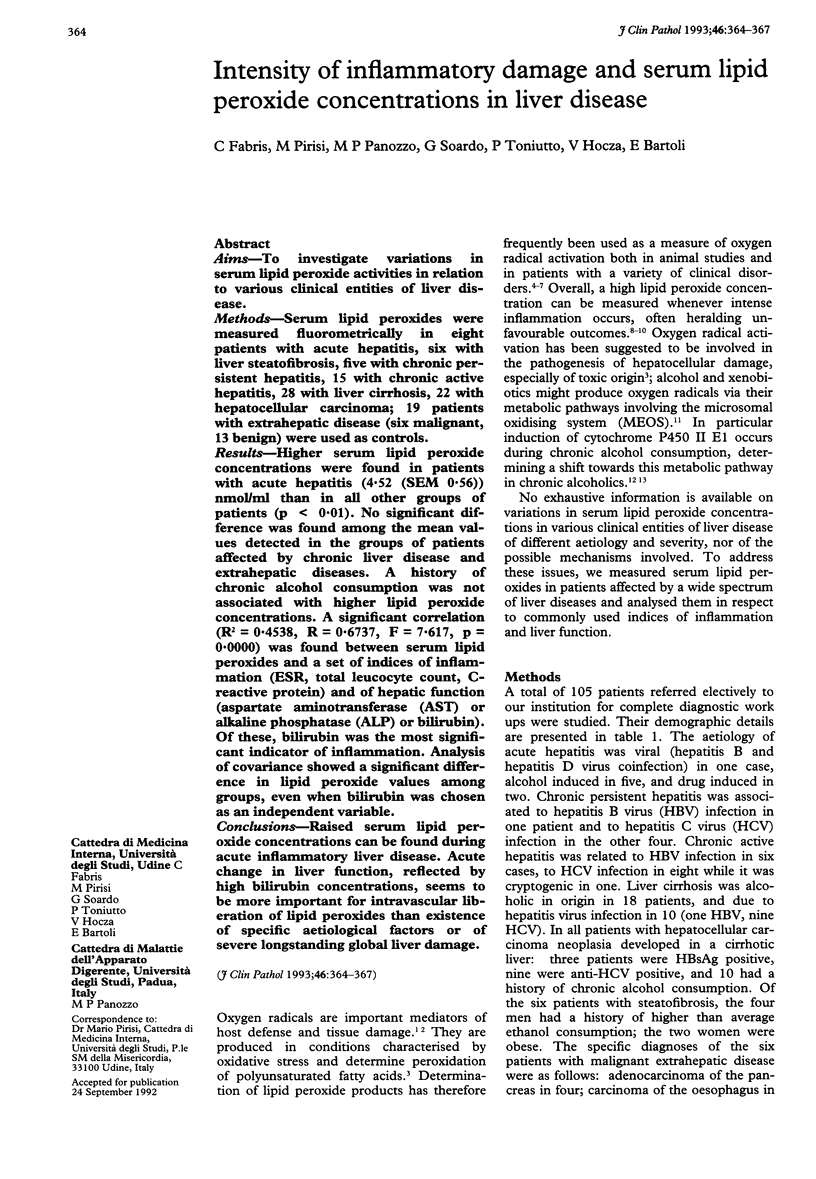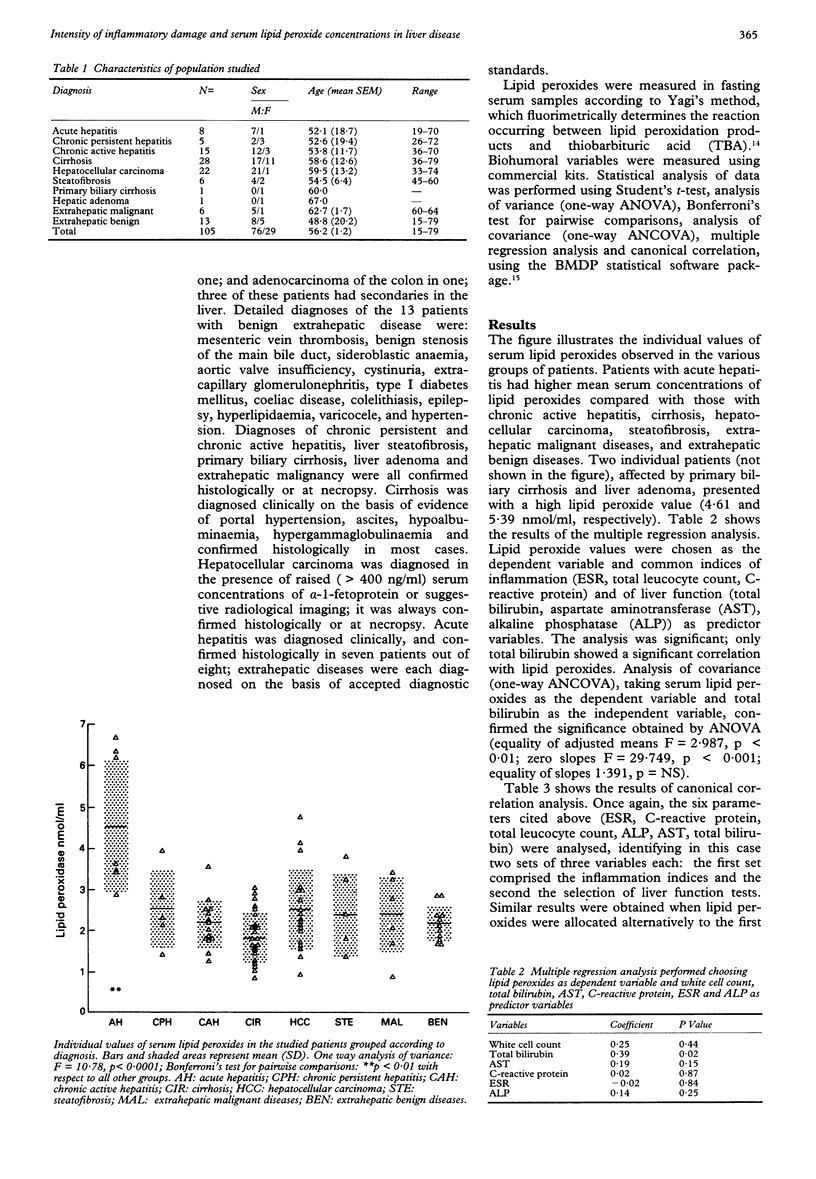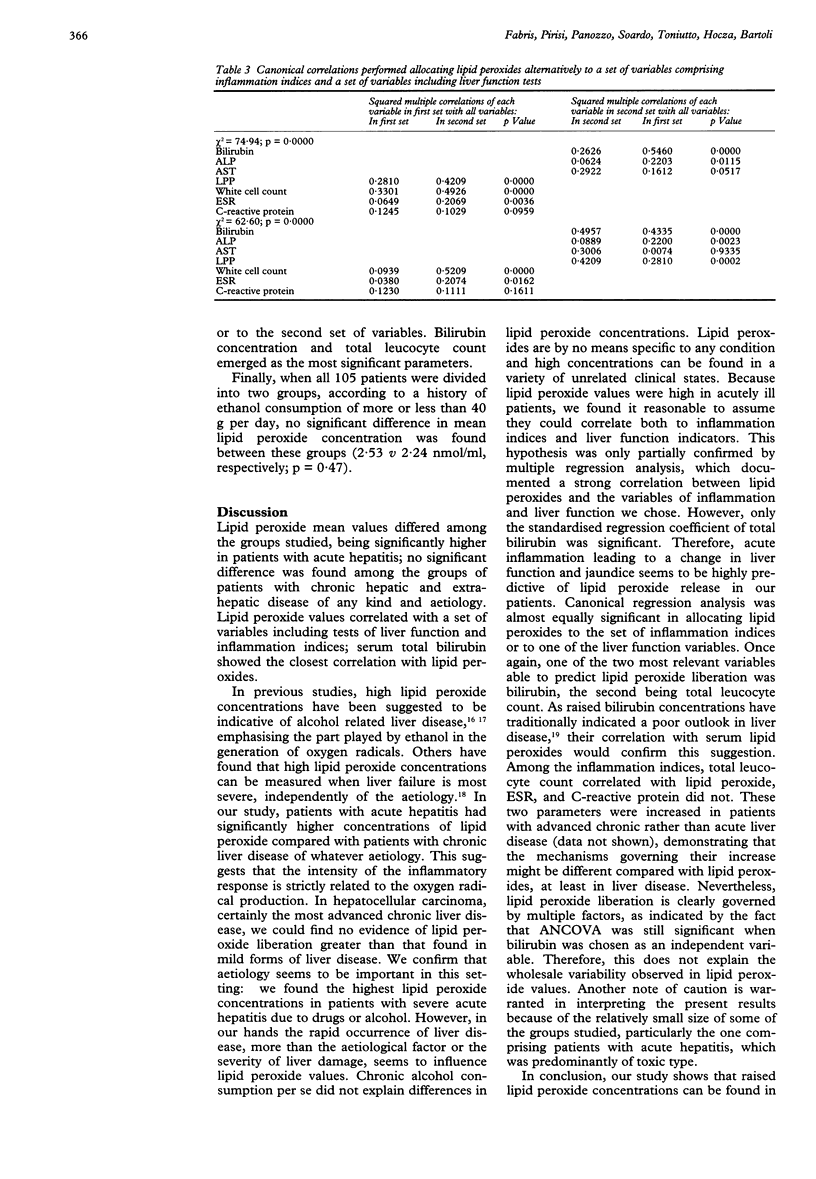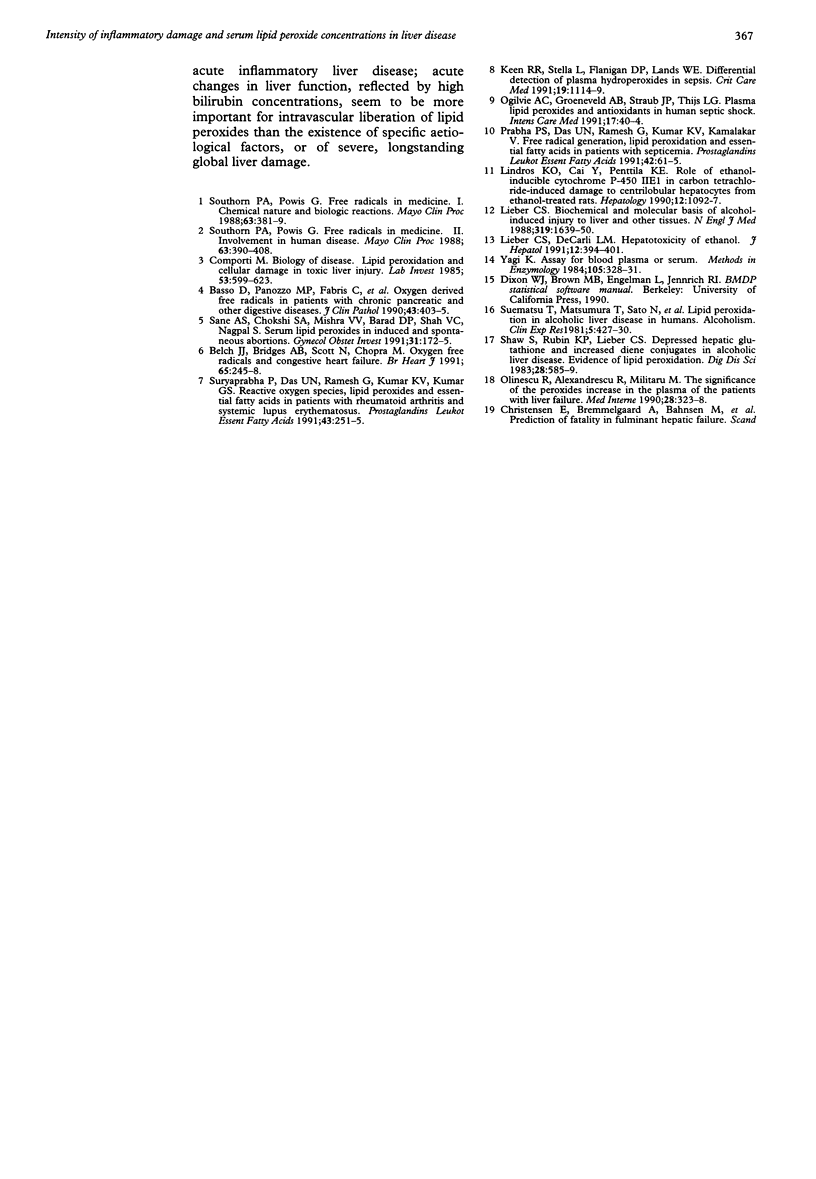Abstract
AIMS--To investigate variations in serum lipid peroxide activities in relation to various clinical entities of liver disease. METHODS--Serum lipid peroxides were measured fluorometrically in eight patients with acute hepatitis, six with liver steatofibrosis, five with chronic persistent hepatitis, 15 with chronic active hepatitis, 28 with liver cirrhosis, 22 with hepatocellular carcinoma; 19 patients with extrahepatic disease (six malignant, 13 benign) were used as controls. RESULTS--Higher serum lipid peroxide concentrations were found in patients with acute hepatitis (4.52 (SEM 0.56)) nmol/ml than in all other groups of patients (p < 0.01). No significant difference was found among the mean values detected in the groups of patients affected by chronic liver disease and extrahepatic diseases. A history of chronic alcohol consumption was not associated with higher lipid peroxide concentrations. A significant correlation (R2 = 0.4538, R = 0.6737, F = 7.617, p = 0.0000) was found between serum lipid peroxides and a set of indices of inflammation (ESR, total leucocyte count, C-reactive protein) and of hepatic function (aspartate aminotransferase (AST) or alkaline phosphatase (ALP) or bilirubin). Of these, bilirubin was the most significant indicator of inflammation. Analysis of covariance showed a significant difference in lipid peroxide values among groups, even when bilirubin was chosen as an independent variable. CONCLUSIONS--Raised serum lipid peroxide concentrations can be found during acute inflammatory liver disease. Acute change in liver function, reflected by high bilirubin concentrations, seems to be more important for intravascular liberation of lipid peroxides than existence of specific aetiological factors or of severe longstanding global liver damage.
Full text
PDF



Selected References
These references are in PubMed. This may not be the complete list of references from this article.
- Basso D., Panozzo M. P., Fabris C., del Favero G., Meggiato T., Fogar P., Meani A., Faggian D., Plebani M., Burlina A. Oxygen derived free radicals in patients with chronic pancreatic and other digestive diseases. J Clin Pathol. 1990 May;43(5):403–405. doi: 10.1136/jcp.43.5.403. [DOI] [PMC free article] [PubMed] [Google Scholar]
- Belch J. J., Bridges A. B., Scott N., Chopra M. Oxygen free radicals and congestive heart failure. Br Heart J. 1991 May;65(5):245–248. doi: 10.1136/hrt.65.5.245. [DOI] [PMC free article] [PubMed] [Google Scholar]
- Comporti M. Lipid peroxidation and cellular damage in toxic liver injury. Lab Invest. 1985 Dec;53(6):599–623. [PubMed] [Google Scholar]
- Keen R. R., Stella L., Flanigan D. P., Lands W. E. Differential detection of plasma hydroperoxides in sepsis. Crit Care Med. 1991 Sep;19(9):1114–1119. doi: 10.1097/00003246-199109000-00004. [DOI] [PubMed] [Google Scholar]
- Lieber C. S. Biochemical and molecular basis of alcohol-induced injury to liver and other tissues. N Engl J Med. 1988 Dec 22;319(25):1639–1650. doi: 10.1056/NEJM198812223192505. [DOI] [PubMed] [Google Scholar]
- Lieber C. S., DeCarli L. M. Hepatotoxicity of ethanol. J Hepatol. 1991 May;12(3):394–401. doi: 10.1016/0168-8278(91)90846-4. [DOI] [PubMed] [Google Scholar]
- Lindros K. O., Cai Y. A., Penttilä K. E. Role of ethanol-inducible cytochrome P-450 IIE1 in carbon tetrachloride-induced damage to centrilobular hepatocytes from ethanol-treated rats. Hepatology. 1990 Nov;12(5):1092–1097. doi: 10.1002/hep.1840120503. [DOI] [PubMed] [Google Scholar]
- Ogilvie A. C., Groeneveld A. B., Straub J. P., Thijs L. G. Plasma lipid peroxides and antioxidants in human septic shock. Intensive Care Med. 1991;17(1):40–44. doi: 10.1007/BF01708408. [DOI] [PubMed] [Google Scholar]
- Olinescu R., Alexandrescu R., Militaru M. The significance of the peroxides increase in the plasma of the patients with liver failure. Med Interne. 1990 Oct-Dec;28(4):323–328. [PubMed] [Google Scholar]
- Shaw S., Rubin K. P., Lieber C. S. Depressed hepatic glutathione and increased diene conjugates in alcoholic liver disease. Evidence of lipid peroxidation. Dig Dis Sci. 1983 Jul;28(7):585–589. doi: 10.1007/BF01299917. [DOI] [PubMed] [Google Scholar]
- Southorn P. A., Powis G. Free radicals in medicine. I. Chemical nature and biologic reactions. Mayo Clin Proc. 1988 Apr;63(4):381–389. doi: 10.1016/s0025-6196(12)64861-7. [DOI] [PubMed] [Google Scholar]
- Southorn P. A., Powis G. Free radicals in medicine. II. Involvement in human disease. Mayo Clin Proc. 1988 Apr;63(4):390–408. doi: 10.1016/s0025-6196(12)64862-9. [DOI] [PubMed] [Google Scholar]
- Suryaprabha P., Das U. N., Ramesh G., Kumar K. V., Kumar G. S. Reactive oxygen species, lipid peroxides and essential fatty acids in patients with rheumatoid arthritis and systemic lupus erythematosus. Prostaglandins Leukot Essent Fatty Acids. 1991 Aug;43(4):251–255. doi: 10.1016/0952-3278(91)90038-7. [DOI] [PubMed] [Google Scholar]
- Yagi K. Assay for blood plasma or serum. Methods Enzymol. 1984;105:328–331. doi: 10.1016/s0076-6879(84)05042-4. [DOI] [PubMed] [Google Scholar]


